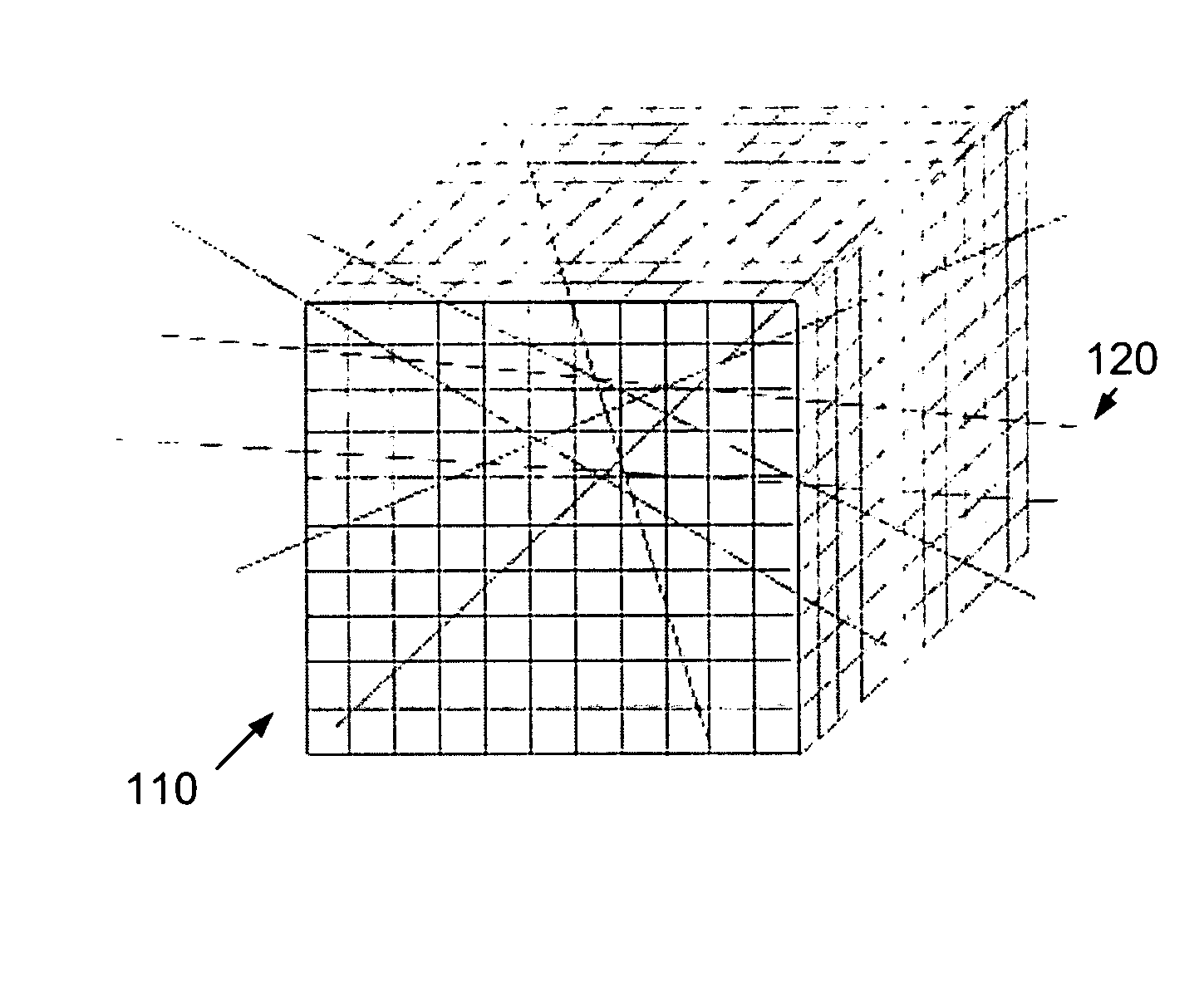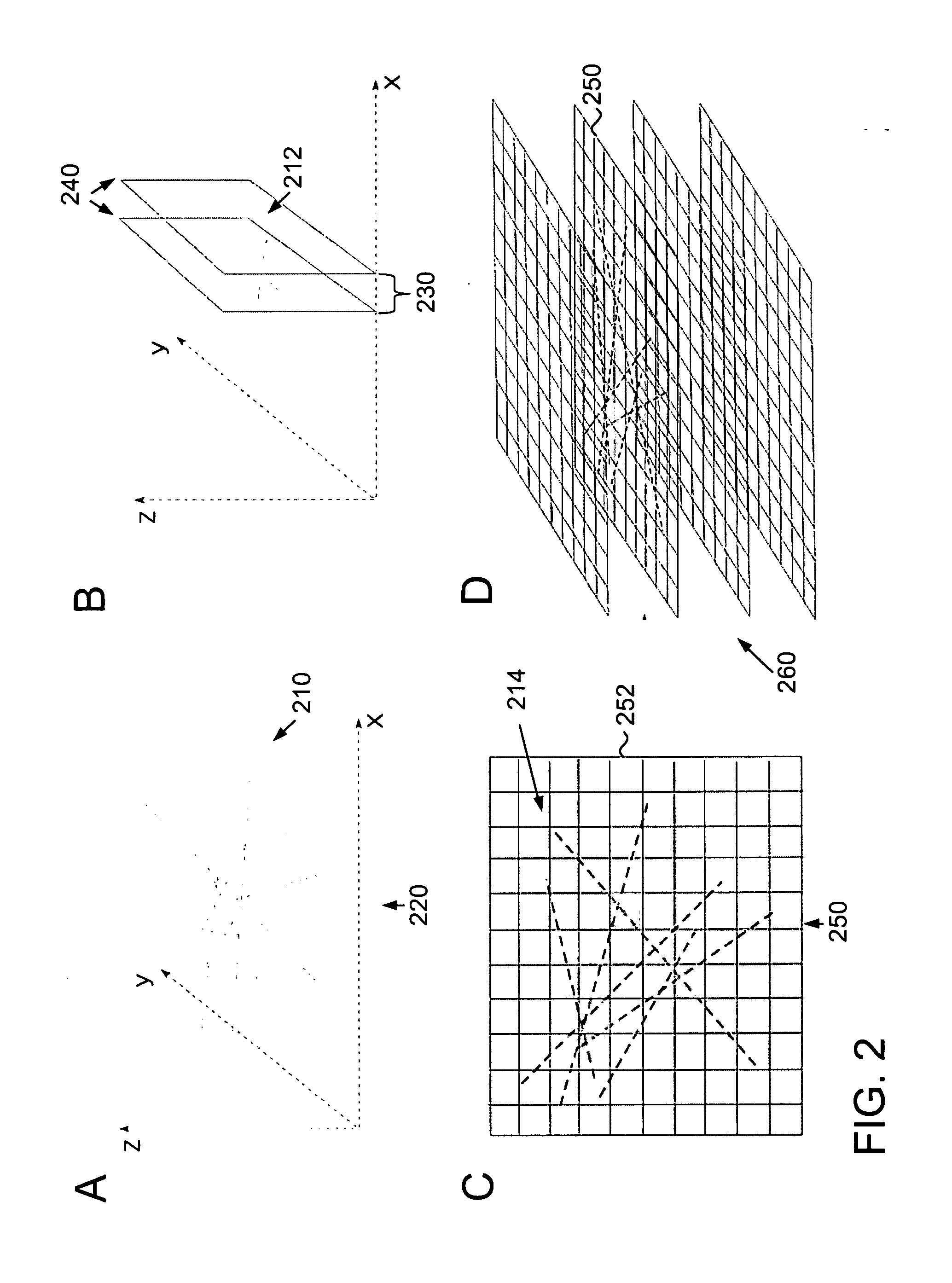Method of reconstructing a tomographic image using a graphics processing unit
a tomographic image and graphics processing technology, applied in the field of medical image reconstruction, can solve the problems of computational cost, inability to solve the problem of -mode based iterative reconstruction schemes that circumvent memory problems, and inability to solve the problem of list-mode tomographic image reconstruction on cpus,
- Summary
- Abstract
- Description
- Claims
- Application Information
AI Technical Summary
Benefits of technology
Problems solved by technology
Method used
Image
Examples
examples
[0035] To test the method of the present invention, images were reconstructed using a list-mode 3D-OESM algorithm implemented on a GPU. This algorithm is an iterative algorithm that uses both the line back-projection and forward-projection operators described above. List-mode is OSEM can be represented mathematically by the following formula: λjm,l=λjm,l-1
where A is the forward projection, B is the back-projection of the inverse of A, and C is the normalization.
[0036] List-mode 3D-OSEM iteratively improves a sequence of image estimates until it converges to the best image of the object scanned by the medical device, and incorporates the following steps:
[0037] 1. Load a subset of event lines.
[0038] 2. Forward project the 3D voxel array along these lines. For each line, this results in a positive real number Vk.
[0039] 3. Prepare a new blank 3D voxel array.
[0040] 4. Back-project all the lines, weighting each line by 1 / Vk, into the blank 3D voxel array.
[0041] 5. For each voxel ...
PUM
| Property | Measurement | Unit |
|---|---|---|
| width | aaaaa | aaaaa |
| depth-of-interaction | aaaaa | aaaaa |
| processing unit | aaaaa | aaaaa |
Abstract
Description
Claims
Application Information
 Login to View More
Login to View More - R&D
- Intellectual Property
- Life Sciences
- Materials
- Tech Scout
- Unparalleled Data Quality
- Higher Quality Content
- 60% Fewer Hallucinations
Browse by: Latest US Patents, China's latest patents, Technical Efficacy Thesaurus, Application Domain, Technology Topic, Popular Technical Reports.
© 2025 PatSnap. All rights reserved.Legal|Privacy policy|Modern Slavery Act Transparency Statement|Sitemap|About US| Contact US: help@patsnap.com



